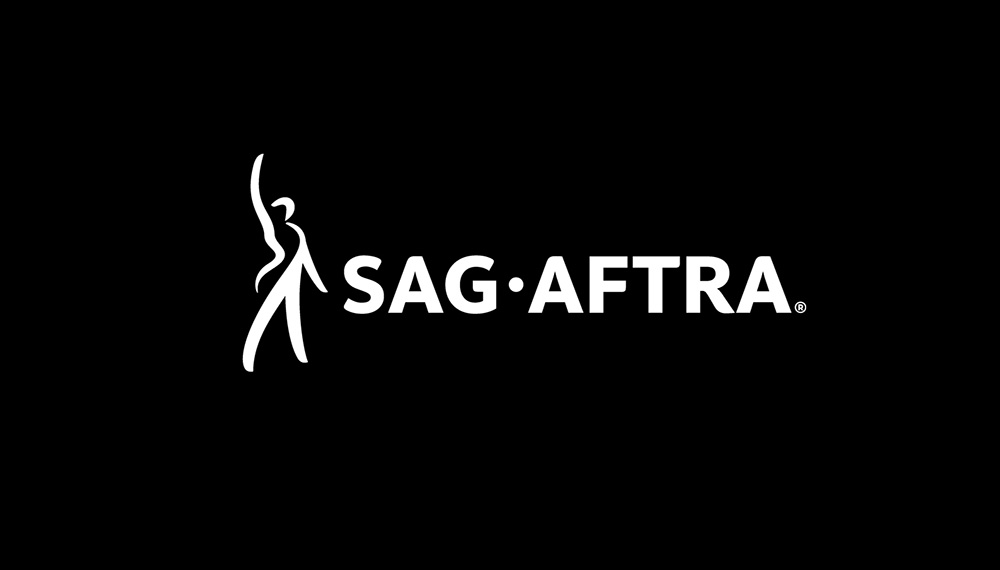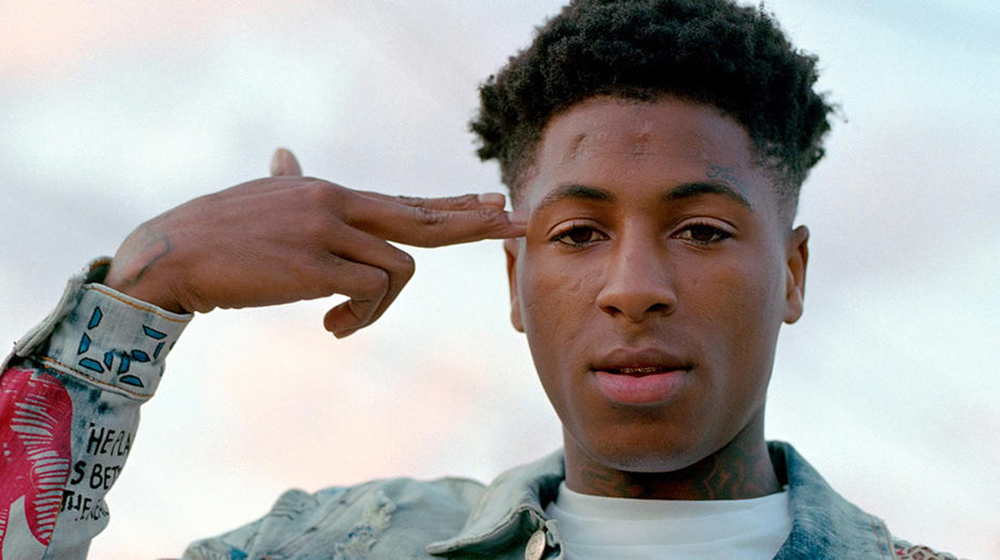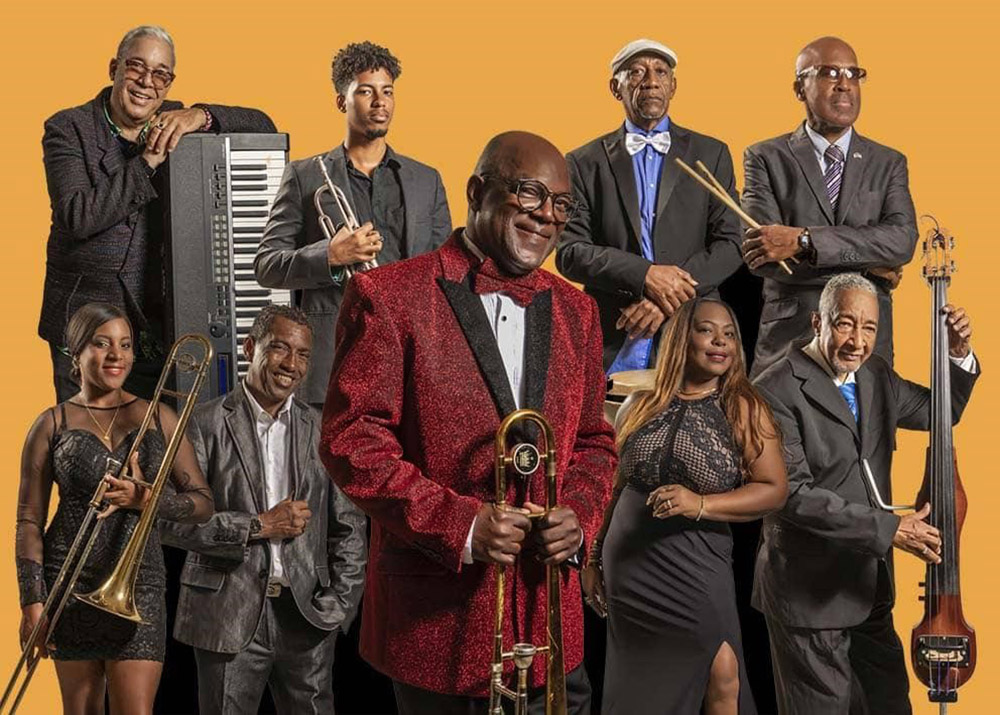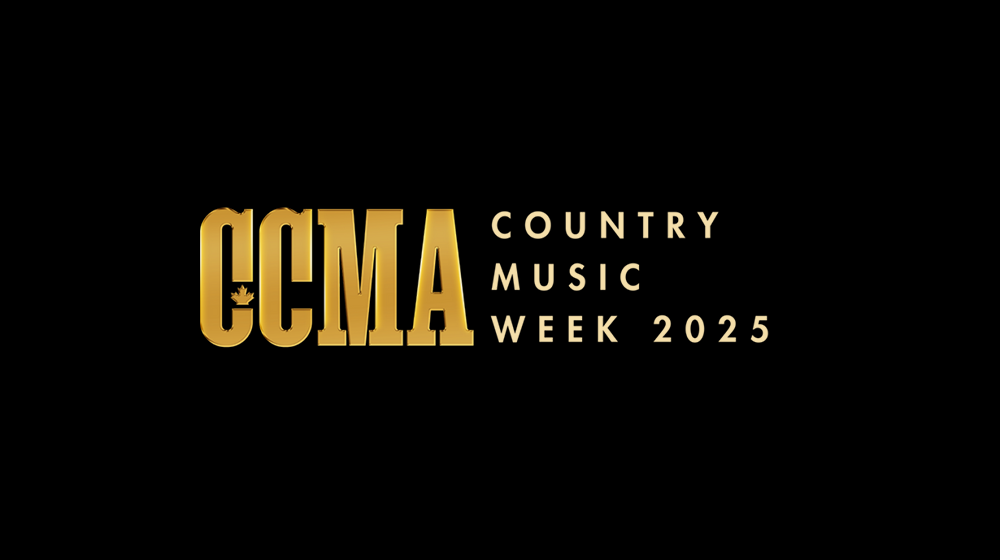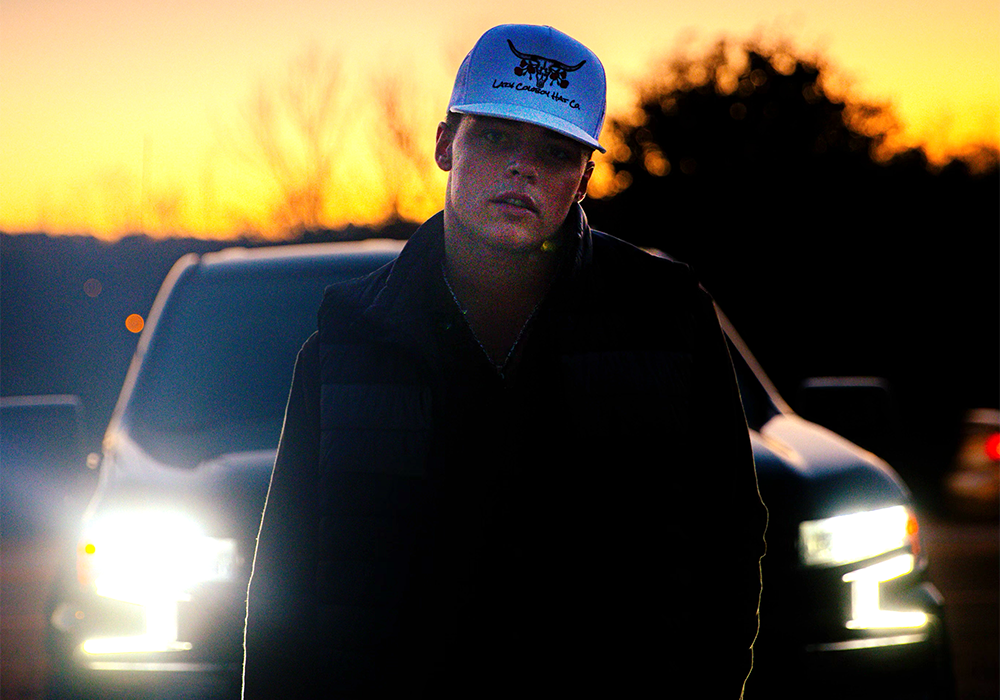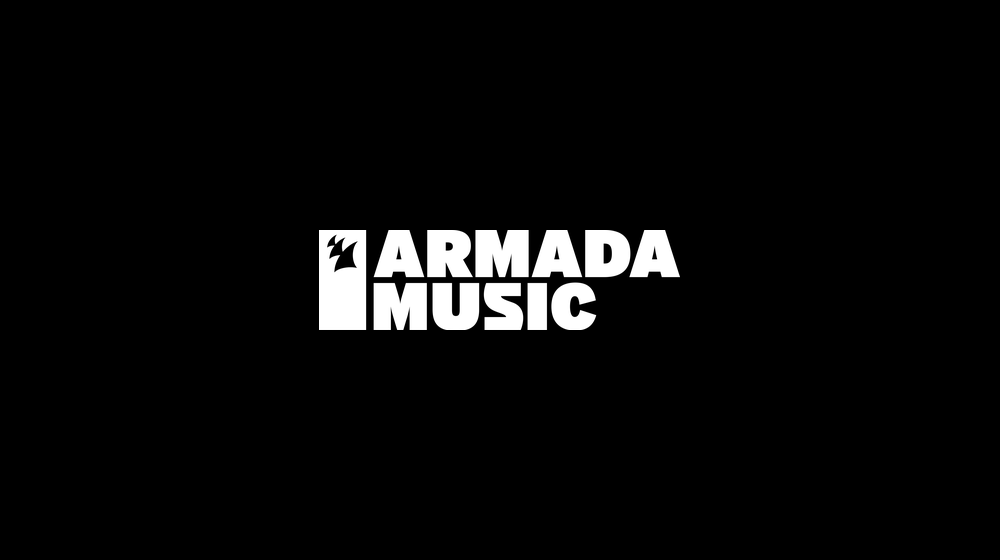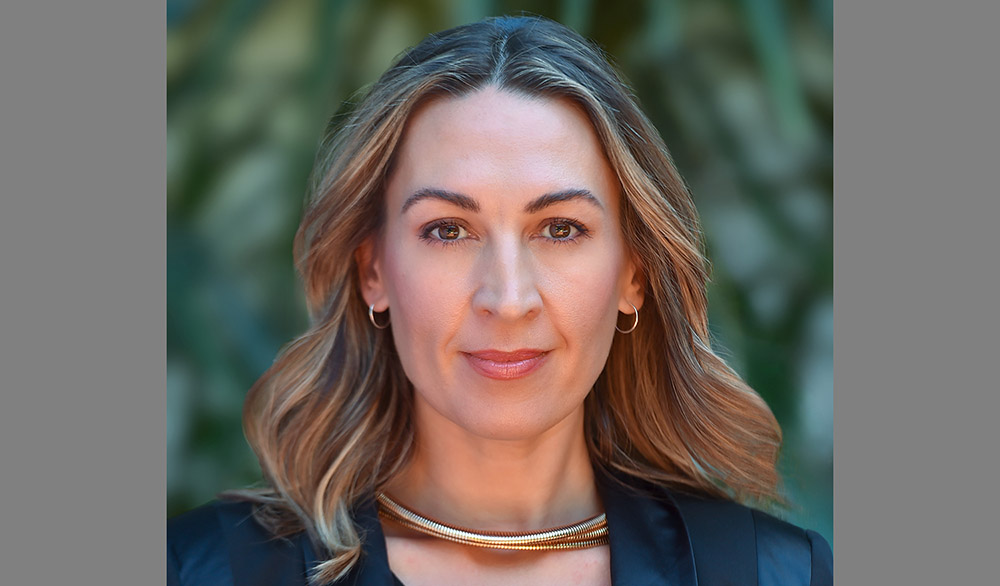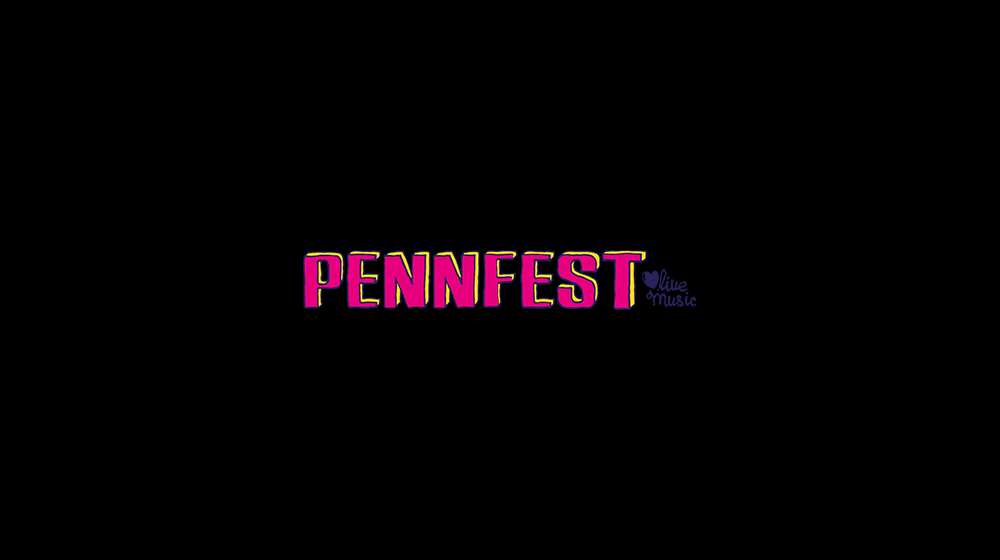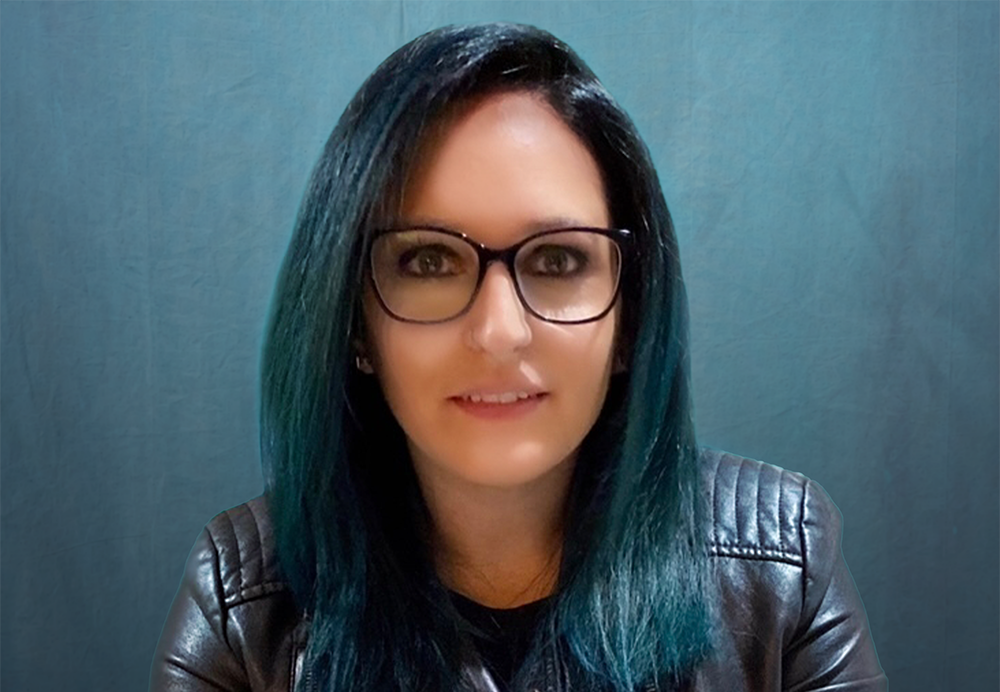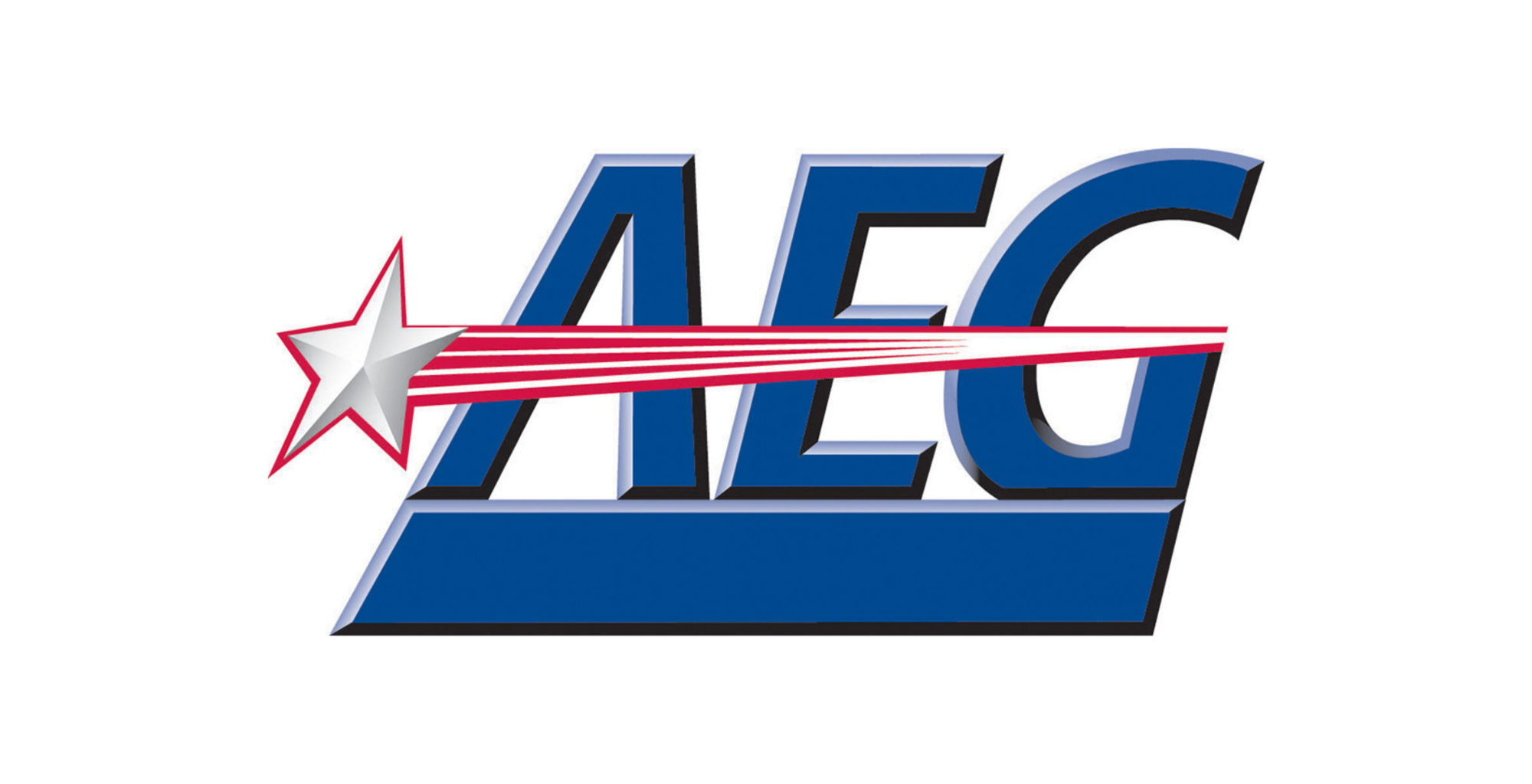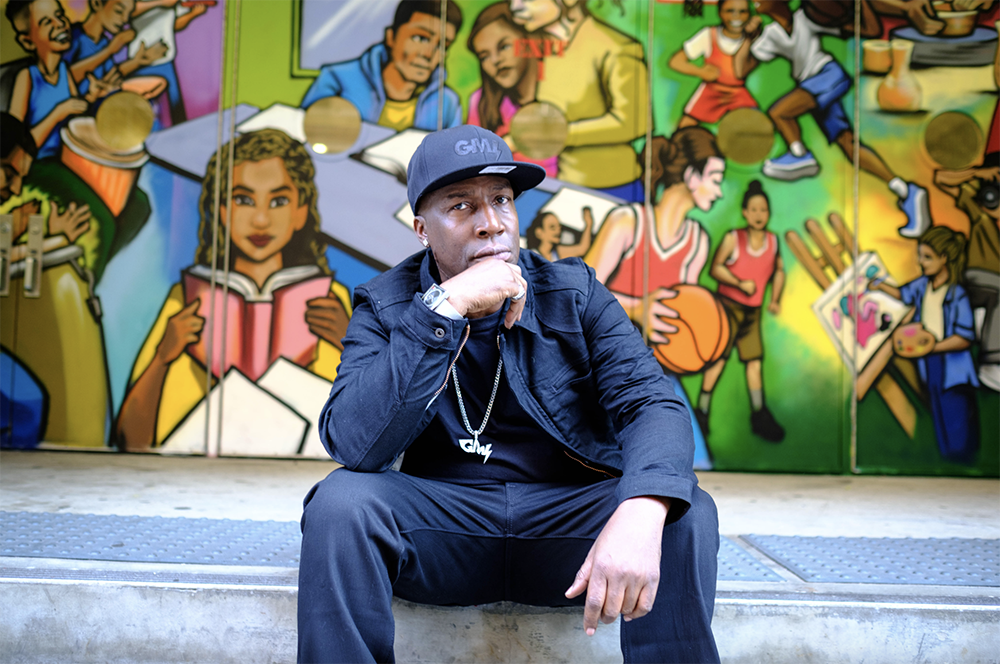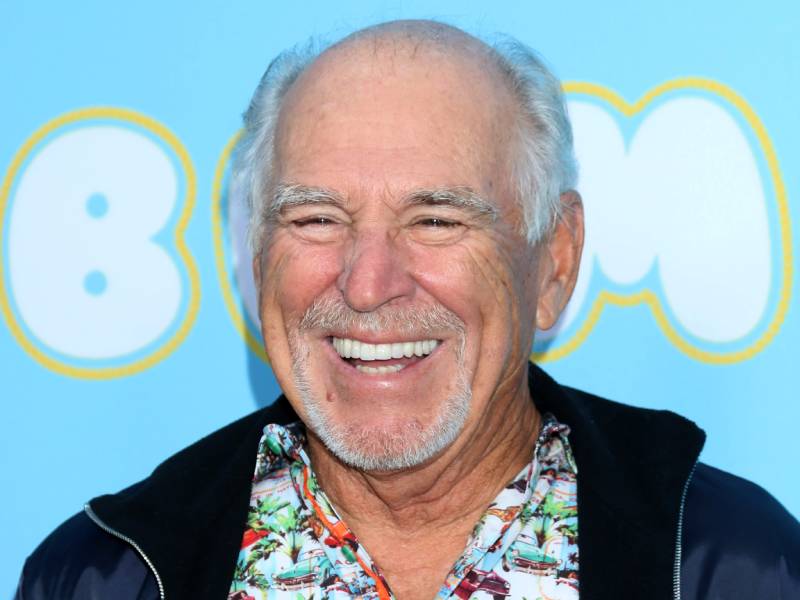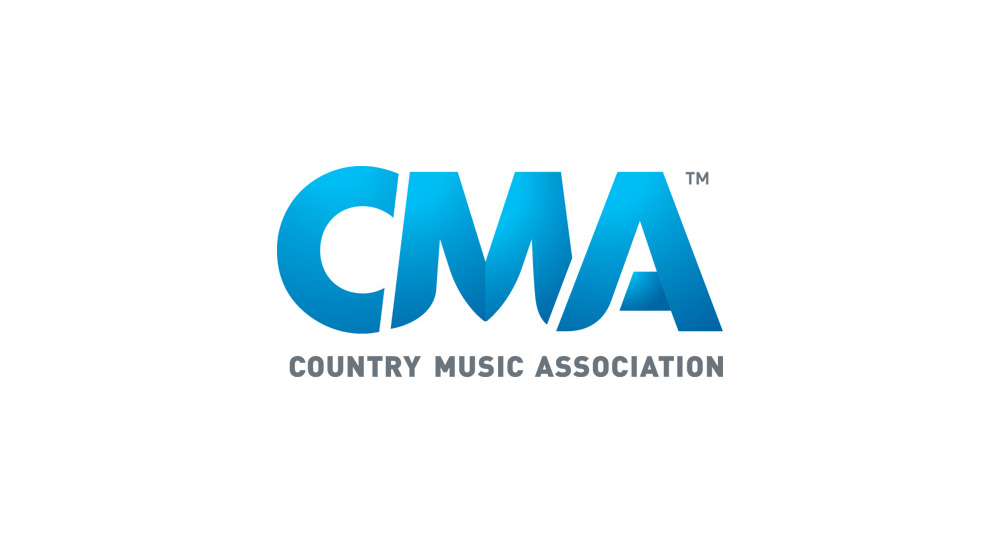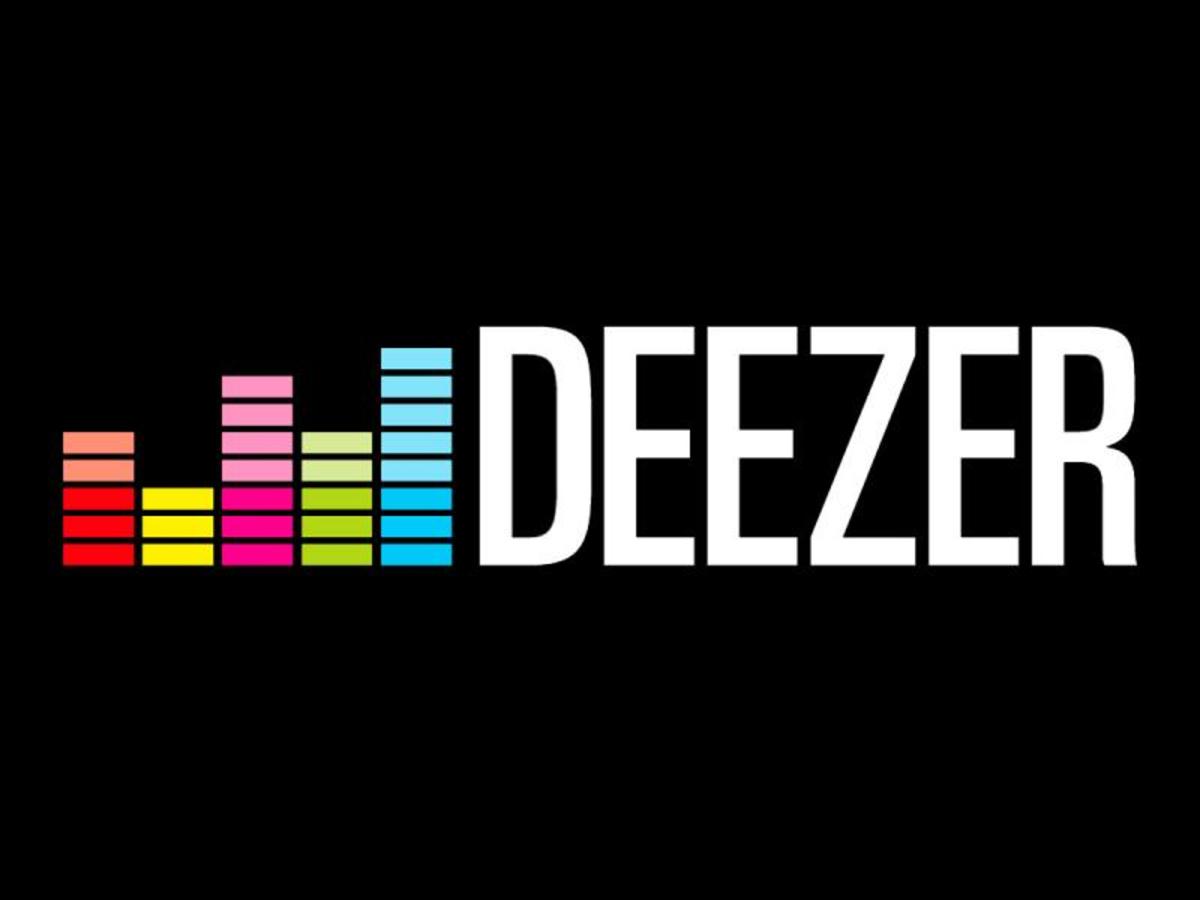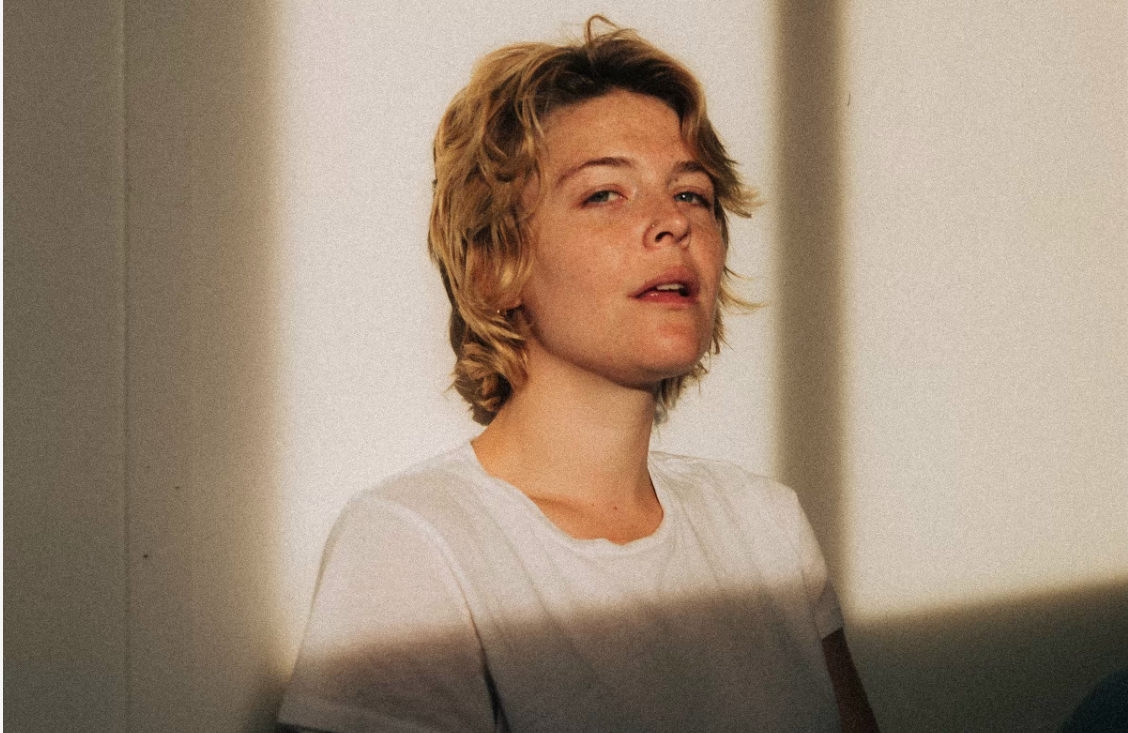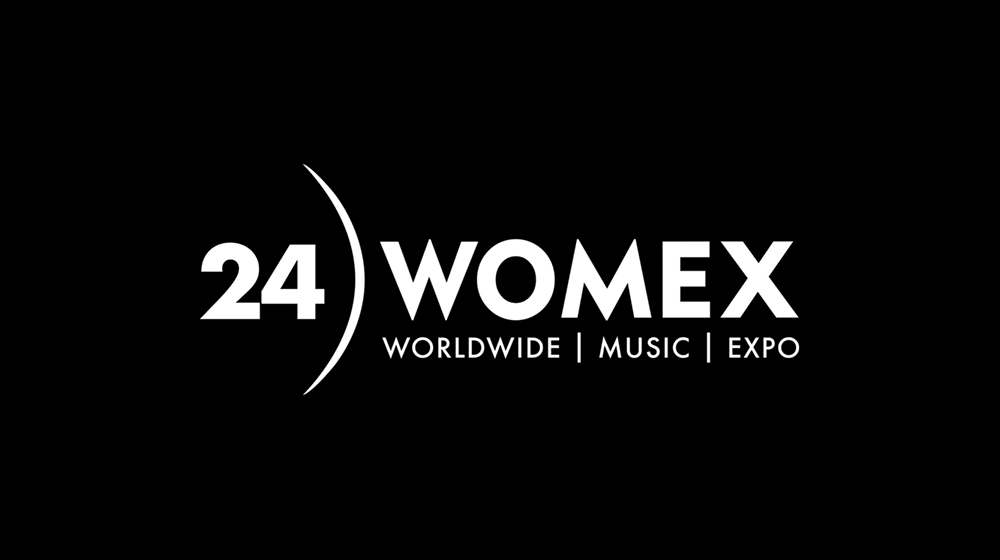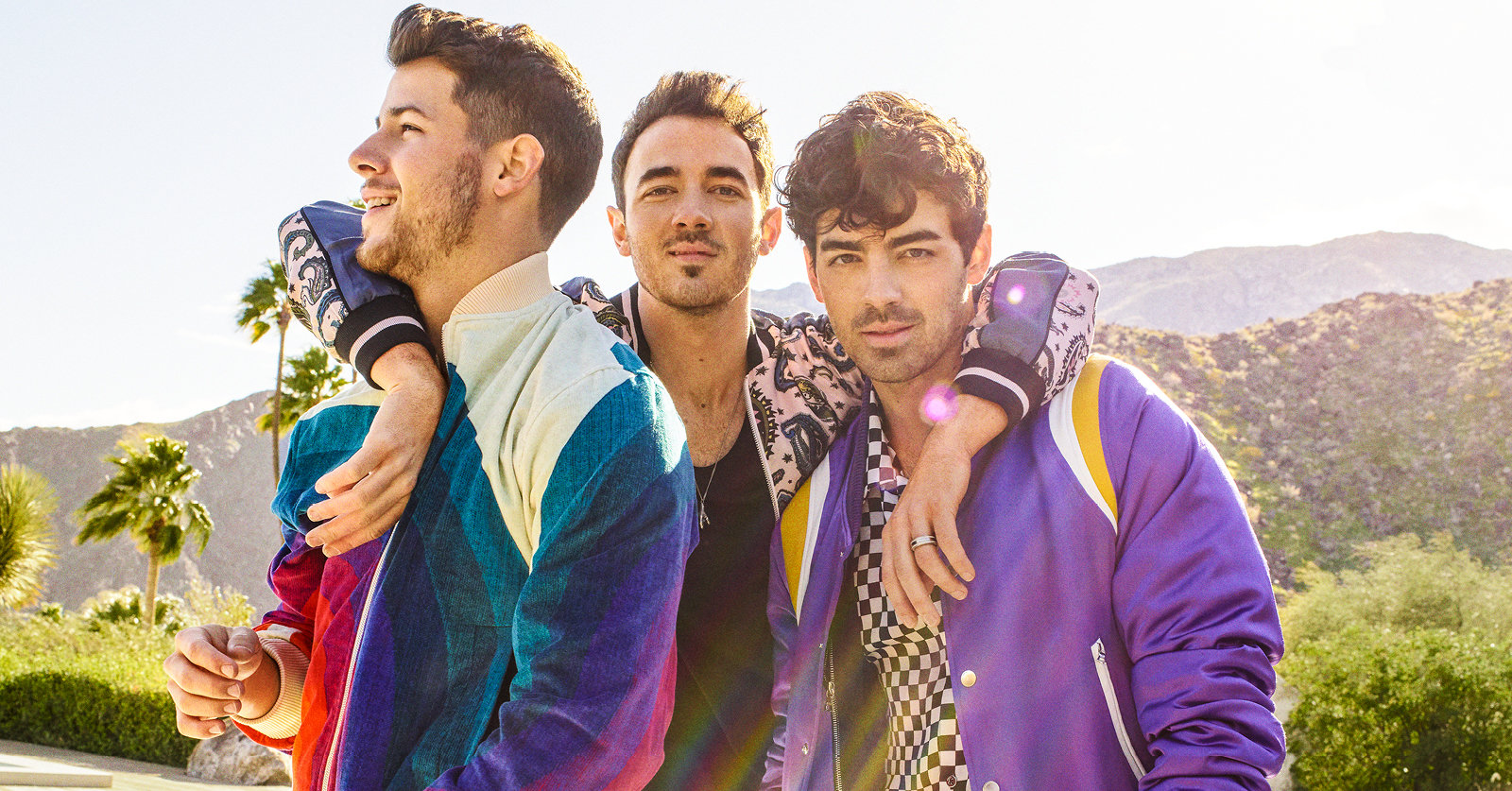This week In the Hot Seat with Larry LeBlanc: Cousin Brucie Morrow, host, SiriusXM 60s on 6.
It’s the perfect American fantasy of the ‘60s.
Riding in a Mustang down a rural stretch of highway to the strains of the car radio picking up Cousin’s Brucie’s raucous Four Seasons’ “Go Go” theme with the celebrated true-blue Brooklyn megavoice exhorting, “Ye-u-ss, hello everybody all over America this is your Cousin Brucie. It’s the WABC Party”—GO GO…”Whoa, everybody sing. I can hear you.”
For decades, Cousin Brucie Morrow has been as part of our lives, our traveling companion, helping us to pass the time by playing the songs of our times.
No matter the cultural significance of the moniker “Cousin Brucie,” this 84-year-old wunderkind–who looks and acts like he’s in his late 60s–was almost certainly the prototype of the Energizer Bunny: The pink mechanical toy rabbit, wearing sunglasses and blue, and black striped flip-flops, the marketing mascot of Energizer batteries in the United States and Canada.
Cousin Brucie may not beat a bass drum, but he’s more than a whirl of frenetic activity, and he’s so recognizable that he can’t walk a city block in New York City without being stopped for a selfie, an autograph, a handshake or a hug.
These days, Cousin Brucie can be heard on SiriusXM’s 60s on 6 station hosting “Cruisin’ with Cousin Brucie” twice weekly (on Wednesday and Sunday), and “Cousin Brucie’s Rock ‘n Roll Party” on Saturday nights.
Cousin Brucie joined Sirius Satellite Radio in 2005 after a mind-blowing career in commercial radio.
To find the source of Cousin Brucie’s drive, one might go back to his childhood in the ‘30s and ‘40s in the East Flatbush section of Brooklyn with its own big-league Dodgers baseball team, its own dialect, and its own Coney Island where he enjoyed the rides at Steeplechase Park.
Brooklyn’s fantasy was that there was no need to go to Manhattan at all, but Cousin Brucie knew better. His avowed intention was to make a name for himself at commercial radio and meet people.
Meet a lot of people.
As a high school student, he became involved in New York City’s All City Radio Workshop, and while attending college at New York University, he helped to create the school’s first radio station, WCAG.
While working at WINS in New York City in 1959, Morrow adopted the moniker, “Cousin Brucie.” He left WINS for a Miami radio station in 1961 but returned to New York City where he blasted the airways at WABC-AM for the next 13 years.
During his time at WABC-AM, Cousin Brucie was renowned for hosting a series of broadcasts and music shows at New Jersey’s Palisades Amusement Park. In 1965, he and stone-faced CBS-TV host Ed Sullivan introduced the Beatles at their historic Shea Stadium concert before 50,000 screaming fans.
Cousin Brucie later moved to WNBC New York, where he spent three years appearing on both radio and television before leaving the airwaves to concentrate on business ventures with Robert X. Sillerman. Their company, Sillerman Morrow Broadcasting Group, purchased and operated 8 radio stations and a television property before Cousin Brucie left to return to radio in 1982 at WCBS-FM New York.
Cousin Bruce has received a slew of honors throughout his career, most notably his induction into the National Association of Broadcasters’ Radio Hall of Fame, the Broadcasting & Cable Hall of Fame, and the New York State Broadcasters Association Hall of Fame.
He has published three books: His 1977 autobiography, “Cousin Brucie: My Life in Rock N Roll Radio”; “Doo Wop: Music, The Times, The Era” in 2007; and “Rock and Roll: And the Beat Goes On” in 2009.
You have been at SiriusXM Radio since 2005. longer than you have been at any radio station.
It’s a long time. Well, I was with CBS, I think for 23 years. And I was with ABC for about 13 years.
But here you are in 2020 at 84 still going strong at SiriusXM.
I know. Isn’t it weird? And you know something, Larry, I’m enjoying it as much as I ever did. I love it. I’m still having a good time. I’m on Wednesdays, and Saturdays live, and Sunday’s show is called “The Best of Brucie.” and that is an archival type show that Colton Murray puts together.
On July 9th, 2012, you returned to WCBS-FM (101.1) for the 6-9 PM shift to celebrate the station’s 40th anniversary that also brought back DJs Dan Ingram, Bobby Jay, Don K. Reed, Harry Harrison, Ron Lundy, Dan Daniel, Pat St. John, Max Kinkel and Bill Brown.
In an interview you emphasized that WCBS-FM, America’s #1 oldies station, was not just a radio station; that “It was part of the culture of the city. It was cultural wallpaper.” That is what radio stations used to represent in major markets, and still do today in many smaller markets.
Absolutely, and you find the cultural wallpaper in the smaller markets. Not the larger markets. They are still using too many (rating) numbers. They are going by the numbers rather than the heart. Now what I do on my hours is that I go by my heart. That is what I do. If you listen, I talk to people. I’m with them, right? I play the music that they want, and that I want. Period. It is just a beautiful mixture. But being wallpaper, being a cultural wallpaper is really the answer, but it’s not easy.
It’s more difficult to pull off today for you because your SiriusXM audience reaches far beyond New York City.
That’s right. It’s all over the place. But I will tell you something that I found out over all these years, and It works. People are still people. I don’t care if they live in the hills of North Dakota or in the hills here in Brooklyn, they still want one thing. They want comfort. They want to listen to somebody that they feel that they know. They feel that they know me. They know the music. The music, of course, is your connector. That’s an international connector. That is what we all have in common. Language is not. But we have that international connector called music, a cultural phenomenon. Then there are people like myself who make everybody very comfortable, and they (people) feel like they know me. They invite me into their homes, and they get very used to me, and you become literally, without sounding too corny, a relative. And they look forward to it (hearing me on the air). It is a wonderful mix to have the power that allows you to do that.
Is it true that when you were WINS-AM in 1959–your first professional radio break—that your legendary “Cousin Brucie” handle came about. That one night an elderly woman had wandered into the building, and was allowed into the studio while you were on-air, and that she had addressed you saying, “Hey cousin.”
Yep. That is a true story. This was a woman who didn’t have any money, and a security guard brought her in. He said, “Can I bring this lady in?” In those days we weren’t afraid of someone harming us while we were on the air. So this little old twinkly-eyed lady came in. I said, “Have a seat” because I was cueing up my record and then I started. “Yes, ma’am?” She said to me, “Do you believe that we are all related?” I knew right away–look I’m a Brooklyn kid–I knew that she was going to hit me up for money. Who else would say a thing like that? And I said, “Yes ma’am I do.” And I played my record, and she then said, “Look, cousin lend me 50 cents so I can get home. I’m broke.” It was as simple as that. Now, this lady was not into me nor the music. She didn’t know Elvis from Chuck Berry, right? I was playing the Drifters or something. So I give her the 50 cents, and she looked and me, smiled and said, “Thank you, cousin.” And then she left. She went home. That night in the Brooklyn-Battery tunnel (the toll tunnel that connects Red Hook in Brooklyn with Battery Park in Manhattan under the mouth of the East River, renamed the Hugh L. Carey Tunnel in 2012), exactly in the middle of that tunnel–because I swear there’s a flower growing there now—the bells started ringing. A pinball machine started ringing. And I heard a voice, “Cousin, lend me 50 cents to get home.”
Well, the next day I told program director Mel Leeds, “I want to be called Cousin Brucie.” He said, “Are you out of your mind? That is the corniest, stupidest thing I’ve ever heard. This is New York. This is not Morgantown, West Virginia. Are you crazy?” I said, “Mr. Leeds—and he came from California—“Let me explain something to you.” I don’t know where I got the nerve to do this, but I did. I said, “Everybody loves their cousins. They have the best stories, and your aunts and uncles treat you better than your parents.” So he said, “Okay, try it tonight but don’t overdo it.” You can imagine what I did. I don’t think that there were two words in a row that I didn’t string “cousin” in. The next morning Mel fired me for disobeying him, but then he put me on a 7-year contract. Mel Leeds, he passed away. There’s not too many of us standing, Larry. I’m one of the last of my breed standing.
You are older than me and…
Actually, I am younger than everybody. You know what? I am still 35 or 36 or 40.
As we get older our mind sticks with an earlier age, doesn’t it?
(Laughing) Ha. And my body stays that way, and if you look at my Facebook things I still look like a kid. Take a look. Almost a kid.
You live in today.
I’m interested in tomorrow. I’m interested in what’s happening.
You have a terrific Facebook page full of great current photos with celebrities and informative bits on your shows.
That I do every time that I am on the air. Preceding going on, I go on Facebook live and I do a promo of what is going to be on the show. It has become a really wonderful thing for people to follow. What a great technology that is. I talk for about a minute or so, just almost before I go on the air.
Most of your peers are either dead or retired. Why do you still do what you do?
I love it, and I don’t know anything else to do. But I love what I do. There’s one other thing that I want to do if I couldn’t do what I do. I’d take my cameras, and I would travel all over the world, and I’d photograph people. I love people. See I have an absolute need to associate and to relate and to be with people. I guess that is part of the secret (of my career), and part of my desire to keep on doing this, I need to be with people.
Is that not a need to be loved as well?
I don’t know. Once I was asked to go into politics and my answer was, “No. I don’t think so. I couldn’t stand anybody hating me.” So there’s your answer.
We both know that on-air personalities are able to hide behind the microphone, hide their true selves. You seem to be the same personality as on-air. On-air, it is your true personality we are hearing?
Oh, it is. It is. It really is. It’s what you get. I will give you a postscript here that is funny. When I go on the street, people invariably come up to me. I’ve been very lucky. I have great recognition. Wherever I am, it’s, “Hey, you are Cousin Brucie,” and I talk to people. And they look at me and I know right away they are thinking, “This guy is older than I am. Why does he look that way (that young)?” Then the second thing that they always think about, and I get this all of the time, “Where is your echo?” My voice. I always say to them, “The battery went down. I have to replace it.” They wonder where my echo is on the street.
In the ‘80s, as a radio station owner, you created the concept of “human radio” which to me is about having an open interaction on the air. One aspect missing today in broadcasting I think is interactivity. Announcers and DJs today generally talk at audiences rather than to them or with them.
Right.
But part of the reason may be that radio broadcasting, bulldozed by online upstarts such as Pandora, Spotify, and YouTube, felt that it had to invest in technology to improve programming. As a result, personalities have been shunted aside and muted.
Right. Well, could the technology work with the individual who has the skill and wants to be human? Now “human radio” that I really developed for one of my radio stations and I called it that. I bought some radio stations, and on one of my stations I wanted to have a conversation with people, and not at them. That is what I trained all of my radio personalities to get on the air, and not to do weather and time and just talk at somebody that they don’t know. “You are connected with these people.” I still practice that to this day. I am very involved with my audience and I am with them. I am with them. I never talk at them.
At the same time, satellite radio is still a method of communication in which programming depends on the interaction between the host and listener.
My shows—and I don’t talk about this too often—my shows have evolved quite a bit over the past decade and a half, especially since I joined Sirius, and I was right there almost from the beginning. My shows have almost become variety shows. The days of the DJ, I think that they are over. I think that the audience is much too sophisticated to listen to someone reading cards, doing IDs, playing a jingle once in a while, and giving away some tickets. They demand more intelligence. They demand more identity. They want a relationship with the person on the air. (With) the person and the music and whatever you are doing. So my show has really become variety.
When I meet people on the street now—this happens all the time—you know what they say? Years ago, they’d say, “Gee, you were the first one to play the new Beatles’ record. That was great. ‘She Loves You.’ you had it, that’s great.” Today the audiences, and I’m giving an average, will say “Gee, I heard that woman on the air last night. Did she ever get home?” Somebody got lost and they called me. This really happens.
So I get all of these phone calls. A lot of them are just regular. The listener wants to say hello to me. Say hello to his family. But every once in a while something happens, and these make such an impression on the audience. So the audience will say to me first, “Gee, I heard that phone call last night with that woman.” Being Cousin Brucie I love that question. I learn so much. Then they will say, “I love the music that you play.” I dig that. Also, the music that I play, it has changed. The whole thing has changed. Fortunately, I was always aware of that, and I’ve always been involved with making that contact with the audience. The audience comes first and this is something that I’ve always professed all my life. Paying attention to that audience. Number one. Not the music, not the technology. To that audience because the rest will follow.
I loved AM radio of the late ‘50s and ‘60s until the medium was taken over by the “Boss Radio” format developed at KHJ in Los Angeles, and then modified by California radio programming pioneers Bill Drake and Gene Chenault. Shortened music lists. and delivery. Those things took a lot out of radio. I preferred when direct communication was made by the DJ with dedications you could phone in, with contests, jokes, and comments on the music. With the radio consultants coupled by broadcast consolidations, much of the personality was taken out of commercial radio.
Yeah because most of them (radio consultants) were mathematicians. They weren’t radio people. I have very rarely met or got involved with a so-called “consultant” which to me became a naughty word. They relied too much on numbers, crunching numbers, and they were more mathematicians. They weren’t radio people. The problem with those people is that they never really understood the definition of radio.
Are you including consultants like Bill Drake and Gene Chenault for AM, and Lee Abrams, generally credited with developing the Album Oriented Rock (AOR) format? They each chose what records were played at stations, or had a very strong hand in the decision, rather than allowing music directors or DJs the freedom to play anything they chose.
Yes. I am including all of them. I think that they were all mathematicians. They did their thing. They were hired to crunch numbers and to increase listenership so you can get increased dollars from commercials which, thank goodness, I don’t have to worry about anymore today at SiriusXM. Their expertise was, “How do you increase listenership per quarter-hour? You do it by using these numbers and keeping everybody (DJs) to a three-card (announcement), right? Time, weather and things, and get the hell off.”
As well, consultants, radio stations, and even label ensured that all of the irritants were taken out of music selections, including shortening records, chopping guitar solos and so on.
I remember there was time when we were on the air that we used to have two versions of the song when the record would come in. The commercial release, and then the radio release, especially with AM radio. The commercial release would run three minutes, and the radio release would run 2:22 minutes. So right, they took a lot of stuff out. Compressed everything. You can’t do that with an audience now. In those days the audience was not as sophisticated and so it worked. It worked for a while but then suddenly something happened. The ‘70s came along and the audience became very, very sophisticated. So they no longer can get away with just crunching numbers and compressing records. Audiences wanted to hear the full story. They wanted to hear the human voice. They wanted the connective part between the person on the air and their receiver. Very important. The connection was very important, and it still is, and I practice that. I know. I grew up knowing that you have to make a connection with that audience. Just talking to them does not work.
Talk about personality radio tends to focus on DJ-driven radio of the 1950s and 1960s but you, being a bit older than me, would have grown up with Martin Block and the Make Believe Ball Room in the ‘40s on WNEW. It is said that Walter Winchell invented the term “disc jockey” as a means of describing his radio work.
That is who I used to listen to. Martin Block, Willie B (Willie B Williams, who coined the title “Chairman of the Board” for Frank Sinatra.), and Ted Brown (a radio talk-show host who broadcast for more than 40 years on WMGM, WNEW and WNBC). That is who I listened to, right.
(In 1935, while listeners to New York’s WNEW in New York (now financial news outlet WBBR) were awaiting developments in the Charles A. Lindbergh baby kidnapping, Martin Block built an audience by playing records between the news bulletins. The show was retained by the station after the eventual kidnap trial. Block, borrowing both the concept and the title from West Coast disc jockey Al Jarvis, created the illusion that he was broadcasting from a ballroom with top dance bands performing live. Block left Make Believe Ballroom in 1954 to host “The Martin Block Show” for ABC Radio from the network’s New York flagship WABC.)
The voice of beloved humorist Jean Shepherd was heard on WOR-AM in the 60s. “Friends,” he says, ” It’s Friday night, and Friday night is a night for rebirth… it’s a night for renewed hope. It’s a night for, once again, falling into that same old trap that you always fall into, that it’s gonna happen this weekend, right? Well, at least we can always approach the Emerald City with a degree of objectivity, knowing that we’ve been that way before. Now — wouldja like to hear the second chorus of ‘Margie’?”
Oh sure. I loved Jean Shepherd. He was really a philosopher radio guy. Oh, he was great. I will never forget that one day he was on the air and I was listening. it was late at night and he said something like “I’m traveling on the Jersey Turnpike and I think I’m going to stop here at the Cousin Bruce rest-stop.” Well, I freaked out. “The Cousin Brucie rest-stop.” That is an absolute quote.
We should never forget the first wave of pioneering American R&B DJs like “Moondog” Alan Freed, in Cleveland and New York, Zenas “Daddy” Sears in Atlanta, Dewey Philips in Memphis, Bill “Hoss” Allen and “John R.” (John Richbourg) in Nashville, George “Hound Dog” Lorenz kept in Buffalo, “Hot Rod” Hulbert, and Fat Daddy in Baltimore, E. Rodney Jones in Chicago, and Jocko Henderson who commuted daily between Philadelphia, where he broadcast on WDAS, and New York City, where his two-hour late-evening Rocket Ship Show was on WLIB.
At the end of the ‘60s, there was B. Mitchel Reed and Tom “Big Daddy” Donahue pioneering FM rock radio after stints on AM Top 40 radio. We don’t have those types of colorful personalities on radio today.
No. The training schools no longer exist. Where do you get your training? Guys like Donahue, and all these other guys, and myself? I used to go and watch Alan Freed. I used to go up to WINS, and I’d press my nose against the glass and watch Freed banging on the telephone books until one day he called me in, and he let me sit in with him. But it’s not around anymore, Larry. Those schools. There’s no workshops anymore. So what the guys do, the young people do, is they listen, and they will go down, and they are trained by program directors who really don’t have that background. So vis-à-vis, you get what you got.
Local radio has always been the great equalizer in commercial broadcasting: Free, ubiquitous, and open to anyone, no matter where they live or how much money they make. For decades, DJs started out in small markets and worked their way up to bigger markets like Chicago, Boston or whatever. Look at a resumé of the major DJs of the past, and they’d been at least 10 to 15 stations. Today, many DJs in those regional markets are reluctant to truck their families from one market to another, and they stay put. They don’t want the career disruption of the past.
As Sean Ross, editor of the Ross On Radio, recently told me: “The itinerant DJ is a little less itinerant now, because there are fewer starter jobs.
There are fewer jobs overall. Being fired used to be a mere speed bump, but you can’t count on walking into another job now. There are fewer hosted overnight shows or even locally hosted nights. Spouses are less tolerant, especially if they have the better, or at least more stable, job.
Because there’s not the usual weekends-to-overnights-to-nights-to-afternoons-to-mornings path, I’m seeing more people start as morning show producers/team members, then work up to having a morning show of their own in a smaller market, if that smaller market gets a local show.”
Larry, it’s called dedication. You are a radio guy; I am a radio guy. That doesn’t happen anymore. I just was talking to somebody recently, “With these corporations today”–all of them–“Where the hell are all of the radio people?” We have kids now with the computers programming things, slotting in music, vetting a program, and working it out. There is no more anybody with the guts. The gut feeling is not there, and it is very disturbing to me.
You are surrounded by 20 and 30-year-olds at SiriusXM Radio.
Yes, and that is a strange feeling.
Back in the day, programmers and DJs transitioned tracks to fit alongside each other. Today, especially on gold-based formats on radio, and on streaming services, I hear transitions that don’t fit. Playing the Cowsills back-to-back to Frank Zappa makes no sense. Programmers now generally take their cues from Joe Whitburn’s singles chart books, ignoring past airplay in their market, and ignoring the single’s affiliated album history which, if a big seller, can stall a single’s chart numbers. The result of sequencing without deeper research is a transition that doesn’t make sense. The defense is, “Well, they were both hits.”
Right. Well, I program my own shows. Nobody goes near my shows, Larry. Nobody touches my shows. Nobody. I do ‘50s, 60s, and ‘70s. I mix them. I played what the audience wants to hear, and I play an eclectic mix and I just do it from my gut. If it doesn’t fit, I won’t play it. But that’s very rare. What music doesn’t fit if you make it fit, right? If you give it a good cushion, a comfortable cushion. And then anything fits. Once in a while, I’ll say, “Oh my God. Look at what I just played. I played A and then I played this one. That’s weird.” Years ago, a programmer would have been going crazy.
One of the issues with oldies at radio is that often the wrong version is played or even a re-recorded version is played. Or they are playing the album version of the single which may be different.
That should never ever happen, but it happens even on my show. It happens to me too. My engineer selects a song and, all of a sudden, I’m hearing Elvis Presley at a live concert singing a song that I don’t want anything to do with. I let it go, and then I play the original. I try to stick to the original mono versions, but very honestly and all due respect to some radio stations and people like you, the wrong version, the live version or an album version which should not go on the air unless it is identified—which is alright to play—but it sneaks through once in a while.
I didn’t realize until talking with the music supervisor of the 1975 film “Cooley High,” an African-American film, that there were often different versions of the early Motown hits. The 45 rpm mono version can differ from the album’s stereo versions which many radio stations play still. The tracks on the “Cooley High” were the original mono Motown 45s, and they just blow out the speakers. Now Motown later remastered a lot of their artist box sets to capture the original singles, but I still hear wrong versions played on radio and in syndication, likely programmed by producers that weren’t around back then.
Look this is an unfortunate thing. The audience generally does not hear it.
I don’t agree with you. If I hear a stereo version of a mono hit, I notice. And some of the stereo versions are atrocious mixes.
Yeah, but wait a minute. Alright, I agree with you, but you are not the audience. I’m sorry to say that to you. You are not the audience. Meaning that you are not the typical listener. The typical listener is a guy somewhere up in Toronto or Montreal or Tennessee or North Dakota, and they are hearing that record, that Motown record from an album, and it’s not the original thing. They don’t know. They hear it. Now when I get that on the air, I freak out. I freak out. I hear it, and I know right away. So what do you do? Do you rip it off the air and make it worse? No. That is very bad. That is something that I teach people to never do. Once you have your foot in the water never stop it. Do you know how many times, and I’m sure that you have heard this too, that somebody on the air starts something, and it was wrong and they ripped it off the air? “Stop it. Stop the record.” You can’t do that because that calls more attention, does more harm than it would playing the wrong record. It happens more than I would like it to happen. Say the wrong record goes on like a few weeks ago, my engineer put an Elvis Presley record on. I was doing something, You know you are always busy on-air. All of a sudden, I cue my engineer, and he starts it and it’s the wrong version. Right away his natural instinct is to stop it. I put my hand up, and said, “Don’t touch it.” Every time. This has happened dozens of times. I said, “Don’t touch it leave it alone.” I let it go maybe 3/4s, and then I will come in, and I will start the original. “Now folks you’ve heard something unusual here’s how it should be heard. Here’s the real one.” Bam, and I hit it at the right time. But you have to be very careful. Either that or you have to let it finish. But I don’t want to let it finish because it goes too long. So I will get in when I can, and if the tempo works generally, I hit it pretty well. Not as often as I would like, but it works. It works great.
I will hear records on the radio by groups like the Lovin’ Spoonful or the Rascals where the new stereo mix is so bad that I cringe. And you say that the audience won’t pick that up?
No. Honest to God. Not the typical listener. This is not a put-down, Larry. Please remember that. This is not a put-down. The typical audience, your average audience, will never ever pick that up. You Larry, Brucie, and some other people who have an affinity for music, and love the recordings will pick it up instantly, and get pretty upset. I get quite a few pieces of mail, “Why did you play that version?” Sometimes I won’t even know that I played it.
So some people do notice?
Oh yeah. Oh yeah, but not the typical listener.
You’re talking about die-in-the-wool hardcore music fan with a sizeable collection of records.
Oh yeah. They are the toughest audience. The average audience, I will call them my regular cousins, my cousins are very happy when I play something. Now I try to stick to the mono version. Always.
As the associate producer of the 1996 four-CD box set “Oh What A Feeling,” and co-executive producer of its follow-up “Oh What A Feeling 2” in 2001, I insisted on the original mono master tracks for the two retrospectives of Canadian music. In the case of Sweeney Todd’s 1976 #1 Canadian hit “Roxy Roller” no master tape could be found so I went to the band’s producer and manager and had him send me a quarter-inch reel-to-reel from the recording session.
Good for you. That impresses the hell out of me. But, in all due respect to my audience and your audience, all audiences, this is not the urgent important part. The important part is the content and what we are saying and what we are doing, and what we are playing.
With all your activities today, you seem as relevant as ever in your audience’s lives. Also with the technology available today with the internet and cell phone—the portability to travel freely with communications—is a life changer similar to the impact of the transistor radio in the early ‘50s which set the radio free. Teenagers no longer had to sit with their families to hear radio entertainment. They could have radio under the covers into the night, and at the beach. With the arrival of rock and roll, they had their own private world.
(Laughing) Absolutely, you know back in the ‘50s and ‘60s the communication was all done by these three, four, five, and six transistor radios. The other form of communications was the 45 rpm record which gave kids, young people, mobility. But the little cell phone, of course, completely changed our lives. I don’t know if to the negative or more of a positive. It has taken over our lives, but it has given us tremendous mobility. But the mobility back then, it was the little transistor radio. I always said that rich kids have the 5 and 6 transistor radios, the regular kids–the kids whose parents were working class–would have the two transistor radios. So I always knew economic brackets when they told me what they were listening on.
Transistor radio’s portability meant you could take music and DJs to the beach leading to further social interaction and identification with the station and the DJ. You couldn’t really do that before in the same manner.
Well, yes and no. You could now take it to the beach comfortably. If you go back to the late ‘40s you had portable radios albeit the damn things weighed 20 or 30 pounds because they either had wet cells or big dry cells. And that was really a Rolls Royce mark when you had a portable radio, an RCA or Magnavox or Philco and you take this thing to the beach. The original ones in the ‘40s were pretty big. By the ‘50s they got a little smaller. Then we had somebody come out with the transistor radio (Regency, and then The Sony Company of Japan) which gave us complete mobility and freedom.
Today, with a smartphone, I can listen to radio stations from around the world. In the ‘60s, I listened to you in Toronto from New York City on a transistor at night under the bed covers.
Well yes, thanks to a very interesting physical science phenomenon called the ionosphere, especially at night, this AM signal was bounced. It got to a certain point that the ionosphere kept going up, and as it went up, the signal hit that and bounced back to earth. That’s how I got my national name because by the time 9 P.M. came around I was heard all over the place on a local AM signal.
One point I want to make before we leave this. Not only do you have mobility in listening today, but I can do my radio show from anywhere that I am. Anywhere I go. Anywhere in the world I can broadcast on my little cellphone, and it’s pretty good quality if I have a decent signal, and a good roamer. I can broadcast literally from anywhere. I have logged on the air from airplanes, cars from different countries and it is absolutely live, and it’s wonderful. So technology most of the time is very good. The negative is that the cellphone, I believe, has taken over our lives. You can’t eat dinner at a restaurant without somebody next to you talking or every damn table has silverware, a plate, a wine glass, and a cellphone.
The issue is one of privacy too. Years ago clients never called on weekends. A decade ago, it was, “I hate to bother you but…” Today, client calls and emails are every day including weekends.
Or they text you, and God knows what else.
Yes, Saturday and Sundays are open business days.
Exactly because the calendar has shrunk. It doesn’t mean anything anymore. It’s one blob, right? You just hit a button, and it doesn’t matter what day it is. It is a uni-calender.. It doesn’t matter. You are absolutely correct.
An aspect of you having a lengthy career are the many honors you have received. One of the most impressive is that last year you were selected by TALKERS magazine–“The Bible of Talk Radio and the New Talk Media”–as the recipient of its 2019 Lifetime Achievement Award.
See, that reverts back to what I was saying about how my show quality, and the format has changed (to more of a variety program). Now can you imagine, I got the Talkers Award from the magazine? I was thrilled. That made me so happy that somebody recognized what we are doing with radio today, and how it has changed. That’s major to me.
On November 8th, 2018, you were inducted by SiriusXM’s senior director of programming Lou Simon into the Long Island Music Hall of Fame at a ceremony held at The Space at Westbury, with. That had to be cool because Long Island has long been your backyard playground.
Well, it was fun. It was nice. Billy Joel was there, and I had a lot of my friends. It was a very warm evening. It was too damn long (laughing). Christ, I was waiting for them to serve breakfast. I kept saying to the producer, “When’s breakfast?” What is happening today with those award shows—and I get nods all of the time from all over the country now—when I accept an award I always ask how many people are being honored? If they tell you more than 6 or 7, you stay away. I mean God these things go on for hours and hours. They feel that they have to jam everything in from the kitchen sink to a guy like myself.
Well, I would have attended Cousin Brucie Day at Palisades with you sharing stories in a town hall meeting format in Sept. 2018. Palisades Amusement Park, immortalized in Freddy Cannon’s 1962 hit single “Palisades Park,” will always be part of New Yorker’s cultural experience. You were so associated with Palisades Amusement Park for your live broadcasts and shows and such unusual events as baby contests, a triplets convention, and a water-skiing elephant.
I still am (associated). That is a lifetime love for me. I became very much part of Palisades Park. I did all of the shows there for over a decade and a half. I brought live radio there, and I brought the stage shows there. I did that. So Palisades Park became a very solid part of my culture, and it still is. It is an amazing thing. It still has, while these people are still around, it still has an amazing personal feeling for people. When I say “Palisade’s Park” they will smile. Or they will ask me what was it like. So Palisades Park has become another one of our cultural symbols.
We lost the actual park in 1971. For the past 6 or 7 years, I did the broadcast from the State Fair Meadowlands in New Jersey. That stopped last year. I am now renegotiating to broadcast live on Sirius from a very major venue in New Jersey. I have to keep it in New Jersey. I’m going to announce where I’m doing it probably in a couple of weeks.
You grew up in Brooklyn living on East 26th and East 29th?
That’s old Brooklyn.
Did you often make the trek to Ebbets Field in the Flatbush section of Brooklyn? The Dodgers took three National League titles in four years, and finally a World Series championship in 1955. The Bums beat the Yankees in 7 games. When owner Walter O’Malley took the Brooklyn Dodgers to Los Angeles in 1957, were you heart-broken like so many?
Ebbets Field. My dad used to take me to see the Brooklyn Dodgers play at Ebbets Field until one fateful day. He went to get us some hot dogs, and a coke. He instructed me to remain in my seat. Telling this to an 8-year-old did not compute. Yes, I moved and moved and explored. I wound up in the police station at Ebbets. Scared stiff. I thought that those cops were going to put me in reform school. My dad finally recovered me. I never ever went back again to Ebbets Field. But to this day I refer to the L.A. Dodgers as the Brooklyn Dodgers. Hard to break old habits. Upset? Me….noooo.
For summers, you’d head to Palisades Amusement Park and Coney Island?
They were my babysitter every weekend. Every weekend Steeplechase Park at Coney Island.
(Opened in Coney Island in 1897, Steeplechase Park had a 1,100-foot steel track where patrons could race one another on mechanical horses. There was also a Ferris wheel, a space-inspired “Trip to the Moon” ride, and a miniature railroad.)
How on earth did you hook up with Lionel Hampton to record a couple of tracks, “Shimmy,” and “Bruce’s Juice” in 1962?
Yes. Isn’t that silly? Alright. Well, that actually happened at Palisades Park. He was appearing at Palisades and he hung around to watch me do my show. And I made him laugh. He was a sweet guy. He had a perennial smile on his face.
You have a co-write with Lionel on “Shimmy,” and both recordings came out on his label, Glad Records.
Gladys’s Records which was his wife’s name.
“Shimmy” is a great record.
“You take your best gal/You go downtown.” I listen to it once in a while and think, “Oh my God did I do that with Lionel Hampton?” What nerve. What chutzpah. How dare I do that.
Two years earlier you had recorded “Tea With The Sharks.”
Oh my gosh on Clock Records with the Buddy Lucas Band in 1960. I think the B-side was “Slop Around.”
Why did you decide to go to Bermuda to start your radio career with the Bermuda Broadcasting Company? Couldn’t get a radio job in New York City?
Very honestly I graduated at New York University (in the Communications Arts Program. I founded the radio station there (WCAG, a carrier current station with a very limited range that programmed classical music) which is still on. Like everybody else, I sent out demo tapes in those days. I sent out 8 demo tapes and most of them came back and to tell me to go into my father’s business, Two came back positive. One was Bermuda. Now being a young kid, “Doesn’t that sound romantic?: I called and they hired me.
Your first offer came from a Florida station, $82 a week to cover equal time on the air, and running the car wash component of the station owner’s business. You chose Bermuda for $60 and stayed 18 months.
ZBM1 And ZBM2, and I had a lot of adventures there. I grew up a bit. I had never been away from my family. I faced a lot of things there in Bermuda which are a lot of stories. But Bermuda, you are right. What the hell was I doing in Bermuda? But, I hit a very interesting opening there. Nobody really played rock and roll music there, and they’d never heard anybody like me on the air. In those days I would speak very staccato and fast. They used to call me “The Hammer.” So I started a show called “Search Party.” What I did was I combined American rock and roll with local live calypso. It was so much fun. So I had a good time for about a year.
I read that you came to match your voice with the rhythm of the local records. True?
No. I think that came from Alan Freed. Watching his cacophony, watching him beating on the telephone books, and growing up listening to him and the music. It was the beginning of the rock and roll era and the music alone gave you the cacophony, gave you the style, gave you the beat naturally.
In 1961, you left WINS for a one year stint on Miami radio only to return to New York’s powerhouse WABC, where you remained for 13 years. Miami seems like another leap. You are true-blue Brooklyn; you aren’t a Miami guy.
Half of the population there was from New York. What can I say?
Your “Go Go” radio theme song was a 1965 gift to you by Frankie Valli and the Four Seasons?
They did it. I didn’t ask them. They came up with the idea. Bob Gaudio and Frankie in Los Angeles did it and delivered it to me on a five-inch reel of tape. That was a gift.
It still sounds great.
It does, doesn’t it? It still works.
You also use Chuck Berry’s 1955 hit “Maybelline.”
Anytime I go on a radio station, the very first record I play is always “Maybelline.” It’s my good luck charm.
After Miami you landed back in New York at WABC which had 50,000 watts of broadcasting power — most other AM stations had only 5,000 watts–and in the evening you could hear WABC throughout North America.
The first time you played the Beatles’ “I Want to Hold Your Hand” at WABC was on or about December 24, 1963. A record company promotion man — accompanied by an armed guard — came to the station with an attaché case handcuffed to his hand with the record. You weren’t allowed to play it before 9 P.M. At exactly 9 P.M., you put on a tape cartridge of “I Want To Hold Your Hand,” and America went wild for Beatlemania.
I played it 8 times in a row. The phones went crazy. Radio stations all over the country asked us to send them our on-air recording of the debut so they could replay it. We were the first ones nationally. The hype started. The record company spent huge amounts of money behind it for promotion. It went to #1. It was like an express train. There was such excitement. I was probably more excited than the fans. The Beatles were a light in the night to save our industry.
Canadians are justifiably proud that the Beatles broke earlier in Canada in 1963 with the release of “She Loves You”—rejected by Capitol U.S and released by Swan Records in America—which reached #1 at most Canadian radio stations months before “I Want To Hold Your Hand” exploded in America. Still, the decade’s pandemonium and hysteria of the Beatles was centered in New York starting with the band’s appearance on “The Ed Sullivan Show” Feb. 9, 1964. They drew the largest TV audience ever in the United States.
Yeah. Well, that’s (New York) where the money is. That’s where the hype and the promotion was.
(“She Loves You” was released in America) on September 16, 1963, and received a positive review in Billboard. But it failed to chart, and only sold about 1,000 copies. But by January of 1964, an appearance on “The Jack Paar Show” coincided with the release of “I Want to Hold Your Hand,” and America was finally paying attention. The “Ed Sullivan Show” appearance a month later fanned the flames of Beatlemania in America.)
I used to get records from England from as far back as 1962. I’d take them into those damned music meetings, which were the bane of our existence. At the music meetings they’d bring in 20 or 30 records with (PD) Rick Sklar and we’d have 4 or 5 of the jocks in there, two salespeople, and two secretaries and they’d vote on a record. The records were always pre-picked. So I brought in the old Swan Record (“She Loves You”/”I’ll Get You” released Sept. 16, 1963) and they turned them down. “That’s not going to happen here. That’s ridiculous.”).
(Former Capitol Records of Canada executive Paul White broke the Beatles, Dave Clark Five, the Hollies, Gerry and the Pacemakers, and the Yardbirds in Canada prior to them breaking in America.
From 1957-1978, White worked at different jobs at Capitol, including as head of A&R where he reviewed releases from EMI Records in the U.K. for possible release in Canada. In January 1963, he received a stack of singles, including the Beatles’ “Love Me Do” which had been released on Parlophone Records in the U.K. on Oct. 5, 1962.
Bolstered by White’s support, Capitol Canada released “Love Me Do” on Feb. 4, 1963.
It flopped.
Two further Beatles singles, “Please Please Me” and “From Me To You” followed in Canada, but sales were also tepid.
The next single “She Loves You”- rejected by Capitol U.S.–became a huge seller in Canada, reaching #1 at most Canadian Top 40 radio stations.
Capitol Canada had resisted releasing the Beatles’ first album, “Please Please Me.” However, with the success of “She Loves You,” a reworked version of their second album, “With The Beatles,” was issued in Canada as “Beatlemania! With The Beatles” on Nov. 25, 1963,
It was the first Beatles album released in North America.
Sandy Gardiner, an editor and entertainment writer for the Ottawa Journal, was responsible for the name of the album. A native of Glasgow, he had visited Britain in early 1963 and had written an article spotted by White which suggested that the Beatles were poised to take the world by storm. He called the phenomenon, “Beatlemania.”)
Fast forward to Aug. 14th, 1965, when Rick Sklar and you were placed on the 8th floor of the Warwick Hotel in Manhattan to report on the Beatles’ arrival with 5,000 kids on the street below. You were being held by your belt from a window to try to spot the group?
We didn’t have any remote wireless equipment and we were on the 8th floor of the Warwick Hotel, and Sklar was holding me up with my belt by the seat of my pants. If he didn’t like me he could have let me go because I was really hanging out. Then there were the sirens, and kids were herded across the street at The Hilton. Thousands of them.

The Beatles arrived from the wrong direction up West 54th Street?
Yeah, the wrong way, because 54th runs (west to) east across Manhattan. They came up going west, and they herded them in. When they got out of their car the wooden horses across the street broke and it looked like a flood of humanity coming across. Some of the kids actually reached people because they grabbed Paul’s hair. They tore his jacket.
Another cultural moment with you involved is the Beatles playing Shea’s Stadium on Aug. 15, 1965. You co-presented with Ed Sullivan.
Yes. Strange. What a combination. Sid Bernstein, the producer (and manager) was a very good friend of mine, and he was a friend of Ed Sullivan. Now Ed Sullivan was a natural. He introduced the Beatles on TV. He didn’t know who the hell they were. Even when they were on the air he didn’t know. He calls up Walter Cronkite one night and says, “Walter, do you know anything about a group from England called the Beatles?” Walter says…and this is on tape, says “Just a minute, “Mary,” I think his daughter’s name is Mary (Mary Kathleen (Kathy) Cronkite, then 14), “Mary have you heard of the Beatles? “And you hear “Ahhhhhhhh.” So that’s how Ed Sullivan learned about the Beatles.
Your job with Ed Sullivan was to keep the crowd from becoming restless so the band could get safely to the stage. There had never been an outdoor concert of this scale before in music concert history. A sold-out sports stadium, a crowd of 50,000 This could have been a disaster. It must have been scary. The Beatles were flown by helicopter and hustled through a stadium shaking with screams to the dugout with you and Ed Sullivan and Sid Bernstein waiting for the band to get to the stage.
It was kind of interesting. Paul McCartney and John Lennon came over to me. With the cacophony of the audience, you couldn’t even hear yourself. It was horrific. It was wonderful. The excitement. It was like oceans together. John said to me, “Cousin is this going to be dangerous?” I said to him—and I’m nervous as hell because I had never seen a crowd like this; you felt the danger in the crowd—and I said, “No. They are all here to share love with you,” as I was holding my fingers. He said, “This seems dangerous.” They had had never been anything like the energy that was coming from that audience of 50,000 plus kids, mostly young girls. I said, “No it’s okay.” Sullivan didn’t know where he was. God bless him, he was terrific, but he didn’t know where he was. He didn’t know most of the acts.
Among the acts were Brenda Holloway, King Curtis, Sounds Incorporated, Cannibal and the Headhunters, Killer Joe Piro, and the Discothèque Dancers.
You know very honestly I felt bad for any group that was there or any soloist because the audience couldn’t have cared less. They were there for one reason. For these heroes. So we start to walk to the stage, and Sullivan turns to me and says, “Hey Bruce. Is this going to be alright.” Because he didn’t know. “Is this going to be alright.” So I said, No.” He says, “What do you mean? What do we do?” I said, “Ed, you better pray.” And he looked at me with his eyes popping, and he said, “Pray?” Then he turned around, and shook his head and we walked up. I introduced him, and he introduced the Beatles. It was wild. Nothing really bad happened that night, Larry but all of this mayhem it could have been a terrible disaster. It could have been awful. Nobody got hurt. The performance I’d never heard until a year ago. Somebody sent me a recording. I didn’t hear it when I was there. You couldn’t hear a thing. I patrolled with the NYPD the police infield and helped to pry kid’s hands off the chicken wire. But the kids were great. And nobody got hurt. And the police were terrific. They understood.
How much of a competitor was Murray the K?
Not that much. He was then on a smaller station while I was at WABC. We had been on WINS together. He was not happy with me being around. He left us very unhappily. He had stomach cancer (a week after his 60th birthday in 1982). He was not nice to me. He didn’t want me around. He did some things with the sales department. That was one of the toughest things to learn about business growing up as a kid
Eventually, you moved to WNBC New York, where you spent three years appearing on both radio and television before leaving the airwaves to concentrate on business ventures. Dropping in to see you one night in 1974 were Bob Hope and Jackie Gleason, who were shooting a special with Carol Channing at Central Park, the first of Hope’s 1974-75 season of television specials.
A wild night. I used to have people come up to NBC quite a bit, right? And it’s very rare. I’ve been with presidents, and just about everybody in our business of significance, and I have never become tongue-tied in my life., I’m in the middle of a commercial and one of the NBC pages opens the door and brings in Bob Hope and Jackie Gleason. Unannounced. What do you do? You are a kid, right? A young kid. I look up and in the middle of my commercial, “Awwh.” I lost my breath. They sit down, and Hope says to me, “Listen we are doing a bit tomorrow. We are going to be at Central Park (Sheep Meadow) doing my special. On one of our bits, we want to do a radio thing. Teach me how to be a DJ.” And he was so sweet. Gleason was great. He was quieter. So on the air that night I taught him and Gleason. They did commercials, introduced some records. Then at the end of the thing. Hope said to me, “You know I can’t pay you for this but what I’d like to do in order to make amends is to invite you to be my special guest tomorrow on my network television show.’
We all know you as a DJ, but you have been a broadcasting executive as well. In 1977, you and Robert F.X. Sillerman formed the Sillerman Morrow Broadcasting Group. Your first venture into radio came the following year when you two put up $300,000 to buy Wall Radio (AM and FM) in Middleton, New York. You once said, “I taught Bob Sillerman radio, he taught me business.” A fair assessment?
Bob just died recently (Nov. 24, 2019). I delivered a eulogy at his memorial service. Very sad. A very sad moment in my life that I outlasted him (dying at 71). He used to kid me all of the time saying, “You want me to do a eulogy at your funeral? Short or long?” He was a tough character.
I saw a photo of the two of you back then with Bob looking like a hippie with long hair and a mustache.
He was quite a thing. He and I met when Bob wasn’t doing anything. He sold his youth company (National Discount Marketers), and he had made a lot of money. He had some (radio) DNA because his father (Michael) was one of the founding members of the Keystone Radio Network (which ended up going bankrupt when Robert was 13). So he had a little DNA, but he had absolutely no radio experience. No feeling for it. No understanding. But he was a businessman, and boy he knew how to hustle. He was terrific.
After Middletown, you two kept buying stations. Eventually, the company purchased and operated 8 radio stations, and a television property in Atlanta before you sold out in 1985.
I kept flying to our radio stations. I’d go on the air and he’d sell everywhere we’d go. He’d go and sell my shows. We had a little plane with a pilot and we’d go from one station to another.
You stayed on the air, but not at a New York City station?
No. Just on the stations that we owned. Then one day Joe McCoy at CBS-FM called me and said, “Brucie it’s time to come home.” And I had really missed my New York microphone. I missed my network microphone.
Sillerman’s radio industry investments increased substantially. He founded SFX Broadcasting which came to own more than 70 radio stations in 20 markets. Were you part of that?
No. I had a lot of stock in all of that stuff. That is why, Larry, that I can be smiling today. I’m talking to you today smiling because I walked away from that, thank God, before the ‘80s. So I am a real smiling happy guy. I was one of the smart ones. I got out.
(The consolidation of America’s concert market began with SFX Entertainment’s acquisition of New York promoter Delsener-Slater Presents in 1996. SFX spent about $2 billion buying promoters and other entertainment properties, including snapping up 11 regional companies and 82 venues. Sillerman sold the company to Clear Channel Entertainment for an estimated $4 billion. In 2005, Live Nation was formed from a spin-off of the subsidiary, Clear Channel Communications.
In 2012, Sillerman rebooted SFX Entertainment, this time with a focus on the electronic dance music industry. Defaulting on a $10.8 million loan after missing an interest payment of $3 million in January 2016, the company filed for Chapter 11 bankruptcy the next month. At the end of the year, the company went private, and was renamed LiveStyle, with Sillerman exiting the company.)
He was a very smart cookie. He knew how to turn a loaf a bread into a bakery. When he passed away it was a very bad ending. He went through a lot of money personally. We had the greatest time personally and professionally together. He was a terrific guy. He showed me his vulnerabilities. He was not the kind of guy that you knew that you saw at a broadcast function. He was very different. When he was with me he was vulnerable and we got along so great. I’ll miss him.
You’ve been connected to so many films over the years including “Across the Universe,” “Dirty Dancing,” Gas Pump Girls,” and “Sgt. Pepper’s Lonely Hearts Club Band” as well as such TV shows as “Babylon 5,” “Between Time and Timbuktu.” Did you have an agent seeking non-radio work for you through the years?
Alright, this is going to knock your socks off. The answer is no. Because of what I’ve done, what I do– these people all listen to me so they knew where to reach me. All of these outside things, the films, commercials, and television stuff always came to me. I’ll tell you, Larry, I was never able to find an agent or a manager that could do for me than I could do myself because it all came to me. It still does which is a disappointment because I’ve always wanted to have somebody working for me doing that. I have tremendous energy and I still do as you can hear
You could have had a manager who steered you wrong or embezzled your life savings like so many others.
I’d wind up back in Bermuda.
You’ve done well?
Yes, I have done well, and I don’t say that being a wise guy. I’ve been very lucky.
Larry LeBlanc is widely recognized as one of the leading music industry journalists in the world. Before joining CelebrityAccess in 2008 as senior editor, he was the Canadian bureau chief of Billboard from 1991-2007 and Canadian editor of Record World from 1970-80. He was also a co-founder of the late Canadian music trade, The Record.
He has been quoted on music industry issues in hundreds of publications including Time, Forbes, and the London Times. He is a co-author of the book “Music From Far And Wide,” and a Lifetime Member of the Songwriters Hall of Fame.
He is the recipient of the 2013 Walt Grealis Special Achievement Award, recognizing individuals who have made an impact on the Canadian music industry.






















